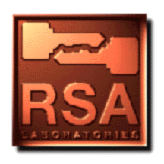

The Diffie-Hellman key agreement protocol (also called exponential key agreement) was developed by Diffie and Hellman [DH76] in 1976 and published in the ground-breaking paper "New Directions in Cryptography." The protocol allows two users to exchange a secret key over an insecure medium without any prior secrets.
The protocol has two system parameters p and g. They are both public and may be used by all the users in a system. Parameter p is a prime number and parameter g (usually called a generator) is an integer less than p, which is capable of generating every element from 1 to p-1 when multiplied by itself a certain number of times, modulo the prime p.
Suppose that Alice and Bob want to agree on a shared secret key using the Diffie-Hellman key agreement protocol. They proceed as follows: First, Alice generates a random private value a and Bob generates a random private value b. Then they derive their public values using parameters p and g and their private values. Alice's public value is ga mod p and Bob's public value is gb mod p. They then exchange their public values. Finally, Alice computes kab = (gb)a mod p, and Bob computes kba = (ga)b mod p. Since kab = kba = k, Alice and Bob now have a shared secret key k.
The protocol depends on the discrete logarithm problem for its security. It assumes that it is computationally infeasible to calculate the shared secret key k=gab mod p given the two public values ga mod p and gb mod p when the prime p is sufficiently large. Maurer [Mau94] has shown that breaking the Diffie-Hellman protocol was equivalent to computing discrete logarithms under certain assumptions.
The Diffie-Hellman key exchange is vulnerable to a middleperson attack. In this attack, an opponent, Carol, intercepts Alice's public value and sends her own public value to Bob. When Bob transmits his public value, Carol substitutes it with her own and sends it to Alice. Carol and Alice thus agree on one shared key and Carol and Bob agree on another shared key. After this exchange, Carol simply decrypts any messages sent out by Alice or Bob, and then reads and possibly modifies them before re-encrypting with the appropriate key and transmitting them to the correct party. This vulnerability is due to the fact that Diffie-Hellman key exchange does not authenticate the participants. Possible solutions include the use of digital signatures and other protocol variants (see Question 25).